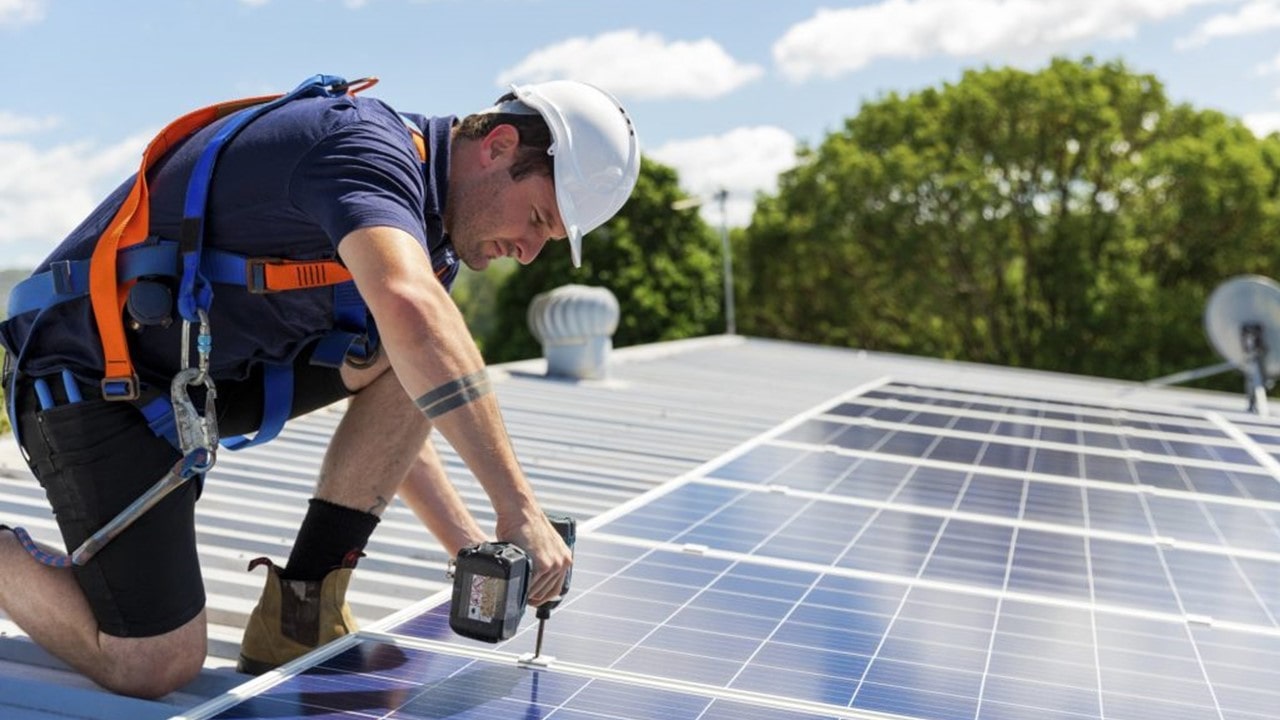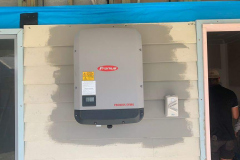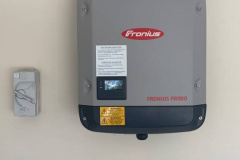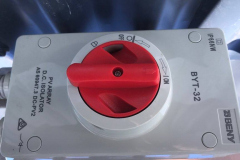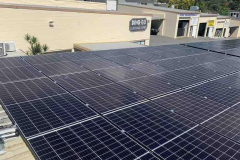Choosing the right battery for your home in Brisbane can be a daunting task. With the rise of solar power, the need for efficient energy storage has never been greater.

In this guide, we’ll help you navigate the complex world of home batteries. We’ll explore the key factors to consider when making your Brisbane home battery choice. From understanding the basics of home batteries to comparing the top-rated batteries for 2024, we’ve got you covered.
We’ll also delve into the cost considerations and government incentives available. Plus, we’ll provide tips on installation and maintenance.
Whether you’re new to solar power or looking to upgrade your current system, this guide is for you. Let’s embark on this journey to energy independence together.
Understanding Home Battery Basics
Home batteries are a key component of any solar system. They store the excess energy produced by your solar panels for later use.
This stored energy can be used when your solar panels aren’t producing electricity, such as at night or during power outages. Here are some key terms to understand:
- Capacity: The total amount of electricity that a battery can store, measured in kilowatt-hours (kWh).
- Power: The amount of electricity that a battery can deliver at one time, measured in kilowatts (kW).
- Depth of Discharge (DoD): The percentage of a battery’s energy that has been discharged relative to the overall capacity.
- Round-trip Efficiency: The difference between the amount of energy used to charge it and the available energy.
Types of Home Batteries
There are several types of home batteries available on the market. The most common types are lithium-ion and lead-acid batteries.
Each type has its own advantages and disadvantages. Here are the three main types of batteries:
- Lithium-ion batteries
- Lead-acid batteries
- Other battery technologies (e.g., flow batteries, saltwater batteries)
Lithium-ion Batteries
Lithium-ion batteries are the most popular choice for home energy storage. They have a high energy density, meaning they can store a lot of energy in a small space.
Lead-acid Batteries
Lead-acid batteries are a tried-and-true technology that’s been used for over a century. While they have a lower energy density and shorter lifespan than lithium-ion batteries, they are often cheaper.
Other Battery Technologies
Other battery technologies include flow batteries and saltwater batteries. These are less common but offer unique benefits, such as longer lifespans and the ability to be fully discharged without damage.
How to Calculate Your Energy Storage Needs
To choose the right battery, you need to understand your energy storage needs. Start by looking at your electricity bill to find out how much energy you use in a day.
Then, consider how much of that energy you want to cover with your battery. For example, if you want to be completely energy independent, you’ll need a battery that can store all the energy you use in a day.
Assessing Your Solar System Compatibility
Not all batteries are compatible with all solar systems. You’ll need to check the specifications of your solar inverter to see what types of batteries it can work with.
If you’re installing a new solar system, consider choosing an inverter that’s compatible with a range of battery types. This will give you more flexibility when choosing a battery.
Key Factors in Choosing a Home Battery
When choosing a home battery, there are several key factors to consider. These include the battery’s capacity and power, its depth of discharge and efficiency, and its warranty and lifespan.
- Capacity and Power: How much energy the battery can store and how much it can deliver at once.
- Depth of Discharge and Efficiency: How much of the battery’s energy can be used and how efficiently it can convert stored energy into usable electricity.
- Warranty and Lifespan: How long the battery is expected to last and the terms of the manufacturer’s warranty.
Capacity and Power
The capacity of a battery is measured in kilowatt-hours (kWh). This tells you how much energy the battery can store. The power of a battery, measured in kilowatts (kW), tells you how much energy the battery can deliver at once.
For example, a battery with a capacity of 10 kWh and a power of 5 kW could run a 5 kW appliance for 2 hours.
Depth of Discharge and Efficiency
The depth of discharge (DoD) of a battery refers to how much of the battery’s energy can be used. For example, a battery with a DoD of 90% can use 90% of its stored energy before it needs to be recharged.
The efficiency of a battery refers to how efficiently it can convert stored energy into usable electricity. A higher efficiency means less energy is lost in the conversion process.
Warranty and Lifespan
The warranty and lifespan of a battery are also important factors to consider. The warranty should cover any defects in the battery and provide a guarantee of the battery’s performance over a certain period of time.
The lifespan of a battery refers to how long it’s expected to last before it needs to be replaced. This is usually measured in cycles, with one cycle being a full charge and discharge of the battery.
Cost Considerations and Incentives
The cost of a home battery is a significant factor in the decision-making process. It’s important to consider not only the upfront cost of the battery but also the long-term savings it can provide.
A home battery can help reduce your electricity bills by storing excess solar energy for use when the sun isn’t shining. This can lead to significant savings over the life of the battery.
Government Rebates and Subsidies in Brisbane
In Brisbane, there are several government incentives available to help offset the cost of a home battery. These include rebates and subsidies that can significantly reduce the upfront cost of the battery.Battery Booster rebate for householders | Homes and housing | Queensland Government (www.qld.gov.au)
It’s important to research these incentives and factor them into your cost calculations. Keep in mind that these incentives can change, so it’s a good idea to check the latest information from the government.
Top-Rated Batteries for 2024: Reviews and Comparisons
When choosing a home battery, it’s crucial to consider the latest reviews and comparisons. These can provide valuable insights into the performance, reliability, and value for money of different battery brands.
Here are some of the top-rated batteries for 2024 based on reviews and comparisons:
- Tesla Powerwall 2, LG Chem, SolarEdge, Q-Cells: Known for its high capacity and efficiency, Brand A is a popular choice among Brisbane homeowners.
- With a strong warranty and excellent customer service,
- BYD, Sungrow, Enphase, Goodwe, Alpha ESS, and most other brands on the Australian market: stands out for its advanced technology and smart features.
- If you’re looking for a budget-friendly option, is worth considering
Installation and Maintenance
Proper installation and maintenance are key to maximizing the lifespan and efficiency of your home battery. It’s important to follow the manufacturer’s guidelines and to regularly check the system for any issues.
Remember, a poorly installed or maintained battery can lead to reduced performance and even safety risks. Therefore, it’s worth investing in professional installation and regular maintenance checks.
Finding a Reputable Installer in Brisbane
When it comes to installation, choosing a reputable installer in Brisbane is crucial. They should have the necessary qualifications and experience to ensure a safe and efficient installation.
Don’t hesitate to ask for references or check online reviews. A good installer will be able to answer all your questions, provide a clear quote, and offer a warranty for their work. Remember, a quality installation is a key step in making the right Brisbane home battery choice. Please take a look at the Solar and battery Packages we offer: https://djsolar.com.au/solar-panels-solar-energy-systems-installer-brisbane/
Conclusion: Making Your Brisbane Home Battery Choice
In conclusion, choosing the right home battery in Brisbane involves considering various factors. From understanding your energy needs to comparing battery types, warranties, and costs, it’s a decision that requires careful thought and research.
Checklist for Homeowners
To help you in your decision-making process, here’s a quick checklist:
- Understand your energy storage needs.
- Compare different battery types and their pros and cons.
- Consider the battery’s capacity, power, efficiency, and warranty.
- Check for government incentives and rebates.
- Choose a reputable installer in Brisbane.
- Consider the long-term costs and benefits.
Remember, the right Brisbane home battery choice can provide you with energy independence, cost savings, and a more sustainable lifestyle.
Please take a look at the Solar and battery Packages we offer: https://djsolar.com.au/solar-panels-solar-energy-systems-installer-brisbane/




 e and a site visit.
e and a site visit.



